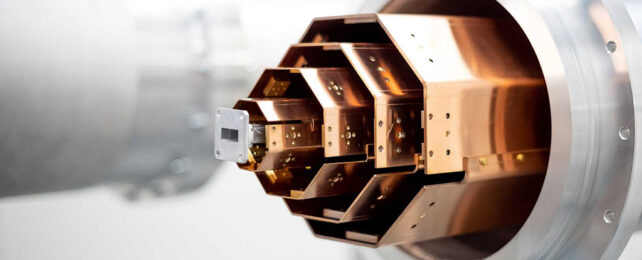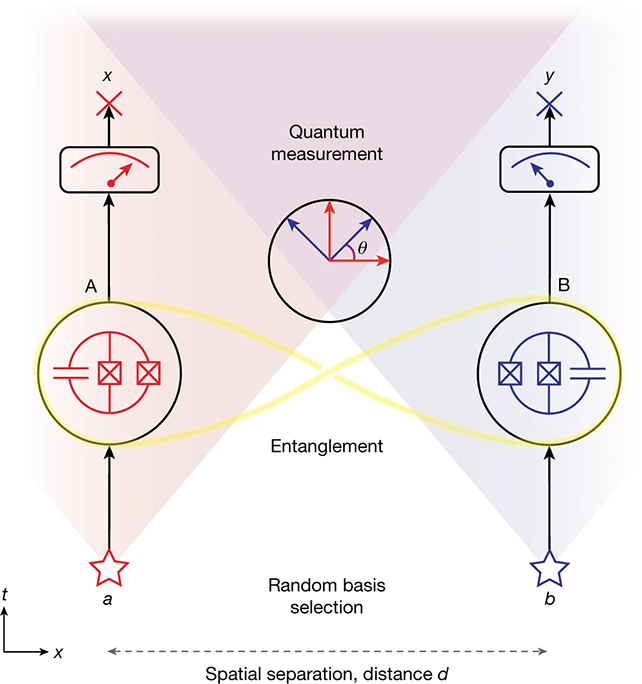
Albert Einstein wasn't entirely convinced about quantum mechanics, suggesting our understanding of it was incomplete. In particular, Einstein took issue with entanglement, the notion that a particle could be affected by another particle that wasn't close by.
Experiments since have shown that quantum entanglement is indeed possible and that two entangled particles can be connected over a distance. Now a new experiment further confirms it, and in a way we haven't seen before.
In the new experiment, scientists used a 30-meter-long tube cooled to close to absolute zero to run a Bell test: a random measurement on two entangled qubit (quantum bit) particles at the same time.
The test proposes a mathematical inequality which, if broken, shows that the theory of quantum mechanics holds together.
Not only does this experiment run the Bell test at longer distances than previously attempted, but it also runs it using superconducting circuits, which are expected to play a significant role in the development of quantum computers.
Because of the way the experiment is structured, with hundreds of micrometer-sized electronic circuits, a modified version could be used in several ways.
"With our approach, we can prove much more efficiently than is possible in other experimental setups that Bell's inequality is violated," says quantum physicist Simon Storz from ETH Zurich in Switzerland.
"That makes it particularly interesting for practical applications."
Those practical applications could include, for example, secure encrypted communications.

Despite the challenges of constructing and fine-tuning the machine, the researchers are confident that it could be adapted to work on larger scales, too, pushing the boundaries of what we know about quantum mechanics.
"There are 1.3 [tons] of copper and 14,000 screws in our machine, as well as a great deal of physics knowledge and engineering know-how," says quantum physicist Andreas Wallraff, also from ETH Zurich.
To remove all potential loopholes from a Bell test, measurements be taken in less time than it takes for light to travel from one end to another – which proves no information has been exchanged between them.
With this setup, it took light 110 nanoseconds to travel down the tube, and the measurements were taken in just a few nanoseconds less. Researchers used microwave photons to create the entanglement, and more than a million measurements were evaluated to show the violation of Bell's inequality.
It's the longest separation between two entangled superconducting qubits yet and shows the promise of qubit technology. The same tech demonstrated here could eventually find its way into full-scale quantum computers.
"Our work demonstrates that non-locality is a viable new resource in quantum information technology realized with superconducting circuits with potential applications in quantum communication, quantum computing, and fundamental physics," write the researchers in their published paper.
The research has been published in Nature.





No comments:
Post a Comment